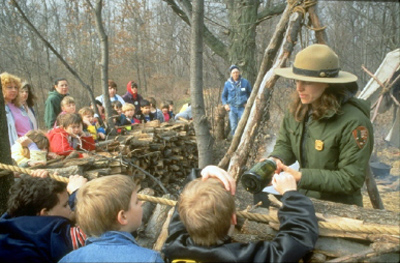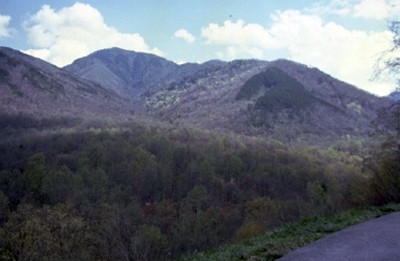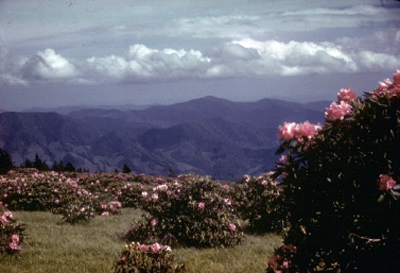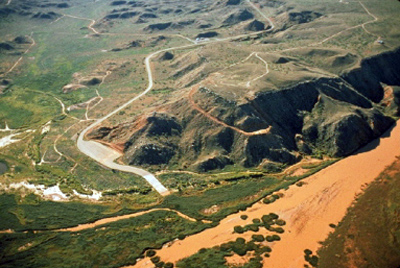
Remote parks in West draw few visitors
The sun rises on Bent’s Old Fort National Historic Site in La Junta, Colo., and washes its brilliant light over the adobe structure where history took place during the mid-1800s.
There settlers would trade in peaceful terms with the Plains Indians and use it as a residence and meeting place.
Today, the fort has been rebuilt in the exact location as the original and as accurately as possible. As the day goes on, this historic site opens for the public to come see, hear and feel the history of that time first-hand with guided tours, activities and role-playing hosted by the rangers and volunteers of the park.
 |
A ranger interprets for park visitors (Photo courtesy of the National Park Service). |
Unfortunately, as for many of the rural western parks, visitors are few and far between. The park only had about 26,000 visitors last year, compared to parks like the Grand Canyon, which had more than four million visitors.
Rick Wallner, who has worked for the National Park Service for about 19 years, has been at Bent’s Old Fort for four and half years. He said he would love to see more visitors at the Fort and realizes the need for more interest in the park.
“It does hurt our staffing, among other things, when we don’t have extra money coming in,” he said. “It’s a big challenge facing the park service today.”
In some instances, however, promoting certain parks is unnecessary and not needed. “Icon parks,” as they are referred to by many park rangers, are the parks that most every American is familiar with, and are very well visited during the year.
An example of a popular park is the Great Smoky Mountains, which had more than nine million visitors in 2006. During the peak summer months, where at least one million visitors pass through during each of these months, there are certain times of the day where it becomes very congested with vehicles and people.
Nancy Gray, a park ranger at the park, knows there is no need for promoting the park any further than the interest the park already receives.
“Don’t get me wrong, we want more people and new people, but not as much as we try to focus mostly on educating the people about the park when they get here,” she said.
Since all of the parks are funded by the government, the National Park Service and the parks themselves are not allowed to allocate extra funds or advertise commercially.
The National Park Service (NPS) handles many of the media relations and gets many questions and comments coming from visitors.
| A scenic vista of the Great Smoky Mountains National Park (Photo courtesy of the National Park Service). |  |
Kathy Kupper, a member of the Public Information Office staff for the NPS headquarters in Washington, said she realizes the need for certain parks to attract visitors, especially with the limited funds granted by the government. However, she has to treat each park equally when it comes to handling media relations.
“They all receive the same preservation and protection,” she said. “We promote the ‘system’ of parks, never at the expense of another one.”
Kupper, when faced with customer complaints, hears mostly about the overcrowding issue and visitors’ concerns that they will not be able to have the “wilderness experience” in which they had hoped.
“Then I will try to emphasize to people that want to enjoy nature to travel to the more remote parks,” she said.
Many of these remote parks, like in the West, such as Bent’s Old Fort, faces the problem of accessibility. It is located in a rural area, not close to a major highway. Wallner hopes that by promoting the park through various media outlets, people will be more likely to be curious and visit.
“We work with all the papers, and have a good record with local paper which reaches about 100,000 people,” Wallner said.
Wallner hopes that the park can reach the Denver metropolitan area and its news media, such as the Denver Post or the Denver television stations.
Denver is only a three-hour drive to the park.
“It’s tough to get into that market and get the word out,” Wallner said.
 |
A meadow of the Blue Ridge Mountains National Park (Photo courtesy of the National Park Service). |
Parks such as the Great Smoky Mountains do not have any problem “getting the word out.” In fact, the community does it for them.
“Non-profit organizations help us to try to get money for the needs of the park,” Gray said. “Our community has done a great job advertising their local area, using the park as an outlet.”
Still, places like the Great Smoky Mountains do not need to promote as much as other parks because of their overcrowding issue and because of the resources they have already secured like an active community that promotes the park.
Perhaps a more rare case, can be found in the most popular park in the United States; the Blue Ridge Parkway, which is a narrow road running through the mountains of North Carolina and Virginia. Even though visitation for last year was almost 20 million people, the park is never crowded in areas and has no apparent need to promote itself.
Pansy Clark, a park ranger who has been at the Blue Ridge Parkway for about 25 years, said she is not sure why it is never congested, but assumes it is because the park is so spaced out over a very large geographic area.
“There is no commercial traffic…. No bumper to bumper traffic you find at most popular parks,” she said. “It’s so well spaced out.”
The congressional regulation on the parks that restricts them from advertising may be hurting the less visited parks. In a time of pop culture, where more time is spent on the computer or sitting in front of the TV, the interest in parks, especially for the younger generation, it seems, is almost non-existent. The influence of these kinds of media appears to be high, and the parks are not, and cannot, be involved in these kinds of outlets.
“The parks are losing relevance to the young,” Rick Wallner said. “In 50 to 100 years, it is possible that places like this will be gone”
| Roads standout from above at the Alibates Flint Quarries National Monument in Texas (Photo courtesy of the National Park Service). |  |
Even if you are the most popular park or the least, NPS’s Kupper cannot stress enough the significance of each of the 391 parks in the “system of parks” across the country. Though she notes that certain parks need more money to elevate themselves, she feels that people just need to realize the important history and natural beauty that each park provides.
“Every park is worth the trip,” she said. “Every park has their special story to tell.”
LEAST VISITED PARKS 2006
| Park or Unit | Visitors |
| 1. Aniakchak National Monument and Preserve | 60 |
| 2. Rio Grande Wild and Scenic River | 135 |
| 3. National Park of American Samoa | 1,239 |
| 4. Bearing Land Bridge National Preserve | 1,265 |
| 5. Frederick Law Olmsted National Historical Site | 1,559 |
| 6. Alibates Flint Quarries National Monument | 1,882 |
|
7. Salt River Bay National Hist. Park and Ecological Preserve |
2,526 |
| 8. Cape Krusenstern National Monument | 2,598 |
| 9. Kobuk Valley National Park | 3,005 |
| 10. Noatak National Preserve | 3,272 |
Source: National Park Service.

Comments are Closed